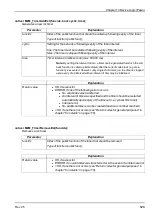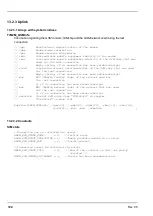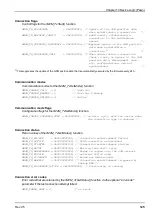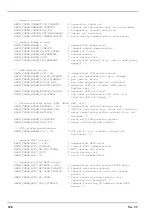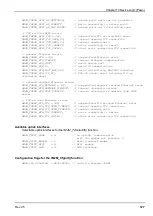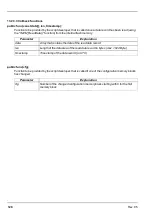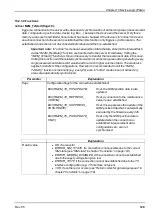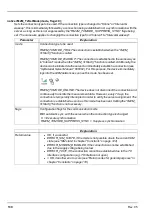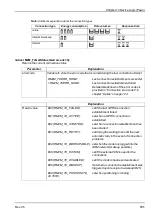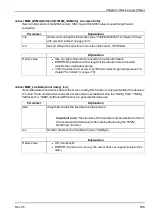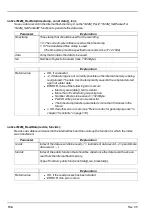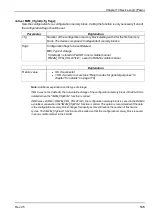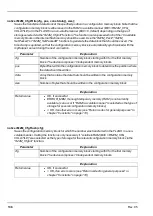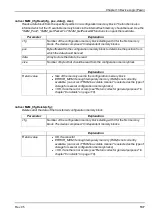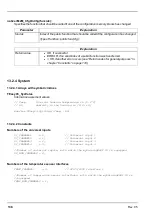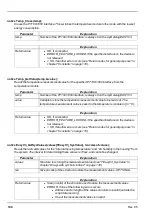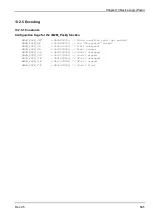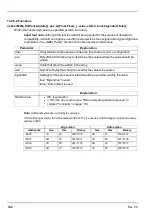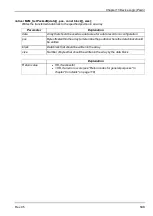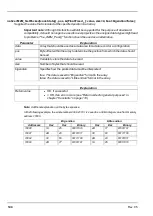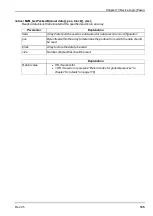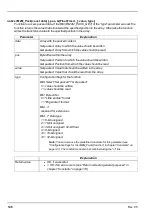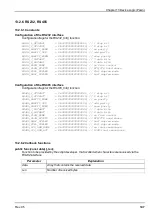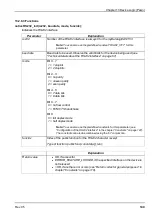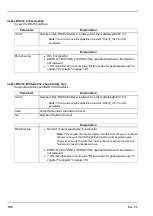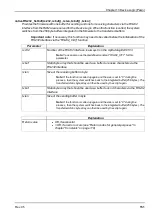
native rM2M_CfgWrite(cfg, pos, const data{}, size);
Saves the transferred data block at the specified position in a configuration memory block. Note that the
configuration memory block is either saved in the RAM in a volatile manner (Bit0 = RM2M_CFG_
VOLATILE) or in the FLASH in a non-volatile manner (Bit0 = 0, default) depending on the type of
storage selected via the "rM2M_CfgInit" function. The function is also passed which of the 10 available
memory blocks in the internal flash memory should be used. Use the "rM2M_Pack", "rM2M_
SetPacked" or "rM2M_SetPackedB" functions to generate the data block that should be saved. The
time stamp is updated, so that the configuration memory block is automatically synchronised with the
myDatanet server during the next connection.
Parameter
Explanation
cfg
Number of the configuration memory block starting with 0 for the first memory
block. The device comprises 10 independent memory blocks.
pos
Byte offset within the configuration memory block to determine the position where
the data should be written
data
Array that contains the data that should be written in the configuration memory
block
size
Number of bytes that should be written in the configuration memory block
Explanation
Return value
l
OK, if successful
l
ERROR_MEM, if enough temporary memory (RAM) is not currently
available. (can occur if "RAM in a volatile manner" is selected as the type of
storage for several configuration memory blocks)
l
< OK, if another error occurs (see "Return codes for general purposes" in
chapter "Constants" on page 118).
native rM2M_CfgFlush(cfg);
Saves the configuration memory block for which the number was transferred in the FLASH in a non-
volatile manner. Calling the function is only necessary if "volatile in RAM (Bit0 = RM2M_CFG_
VOLATILE)" was selected as the type of storage for the relevant configuration memory block via the
"rM2M_CfgInit" function.
Parameter
Explanation
cfg
Number of the configuration memory block starting with 0 for the first memory
block. The device comprises 10 independent memory blocks.
Explanation
Return value
l
OK, if successful
l
< OK, if an error occurs (see "Return codes for general purposes" in
chapter "Constants" on page 118)
136
Rev. 05
Summary of Contents for myDatalogEASY V3
Page 2: ......
Page 13: ...Chapter 2 Declaration of conformity Chapter 2 Declaration of conformity Rev 05 13 ...
Page 14: ......
Page 42: ......
Page 76: ......
Page 88: ......
Page 102: ......
Page 110: ......
Page 116: ......
Page 234: ......
Page 244: ......
Page 252: ......
Page 254: ......
Page 266: ......
Page 276: ......


